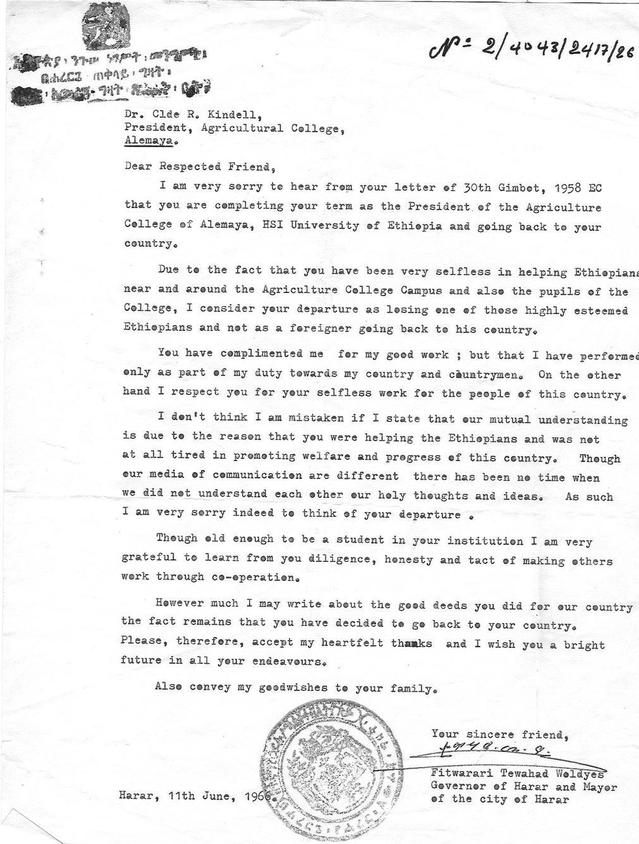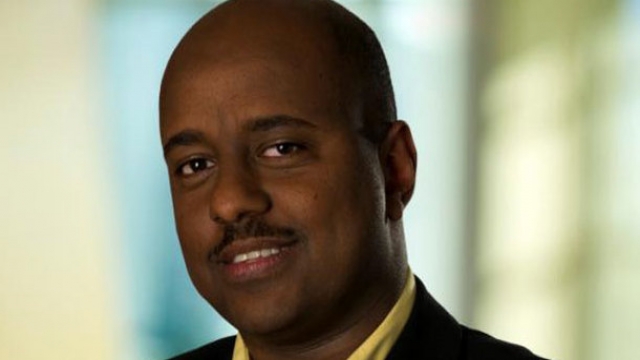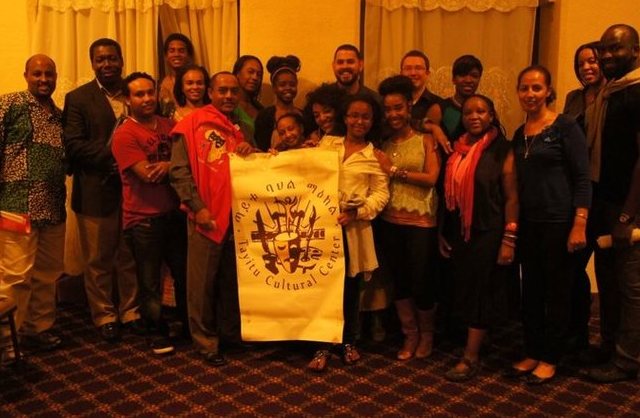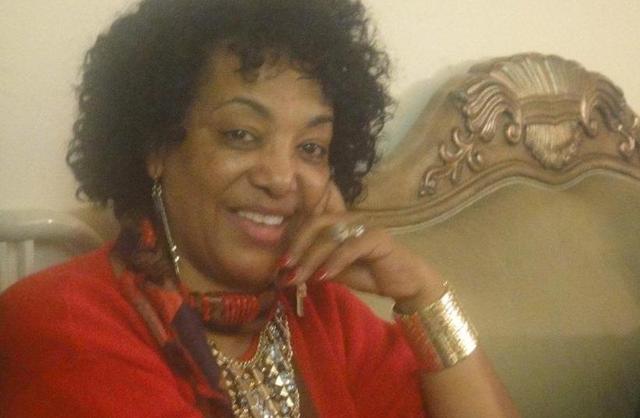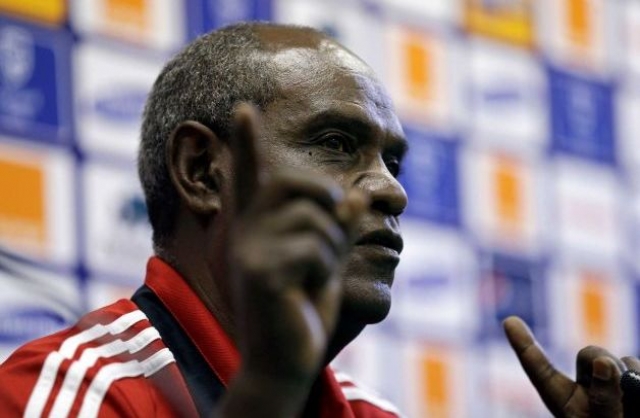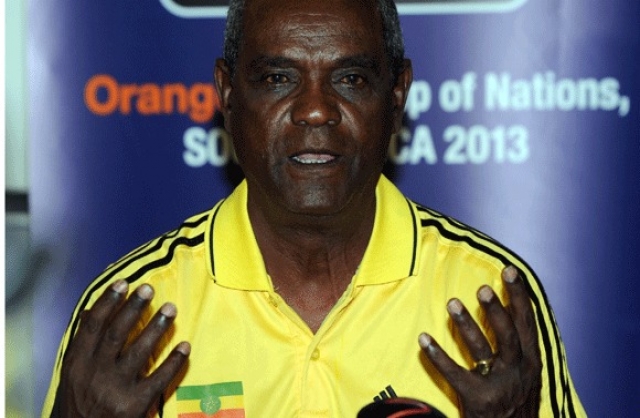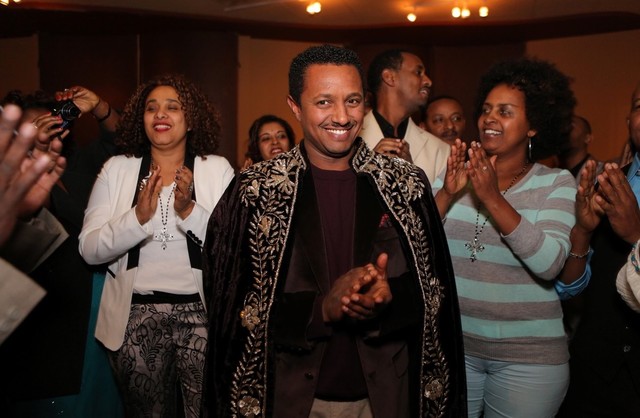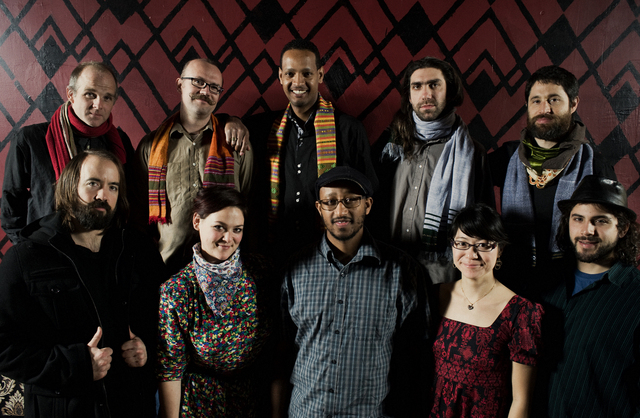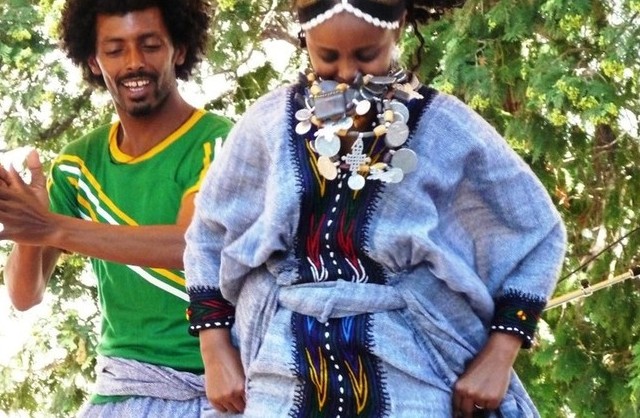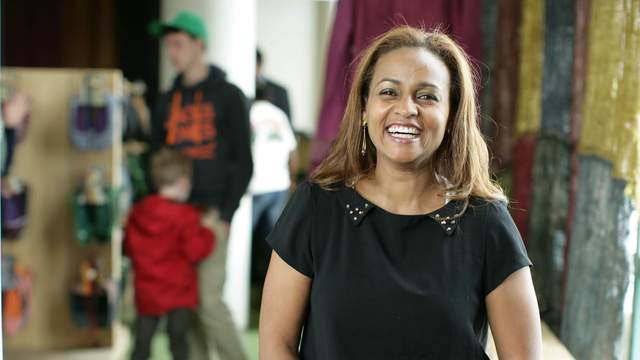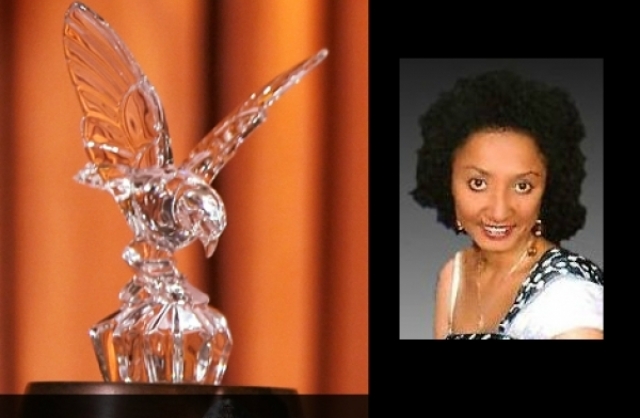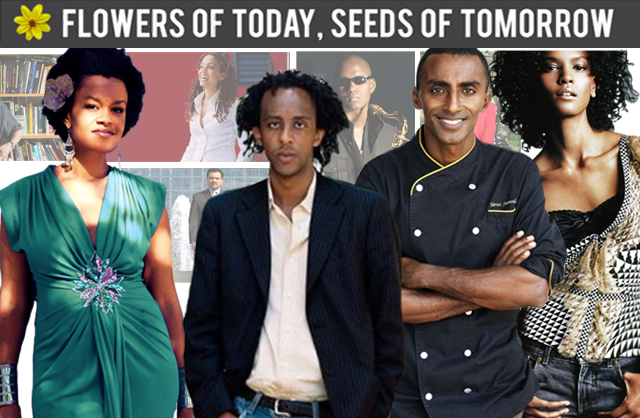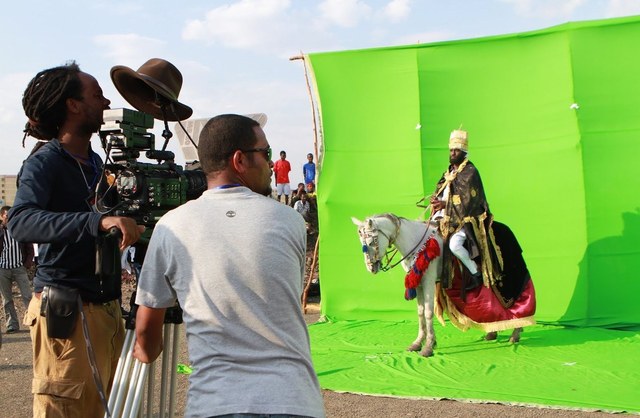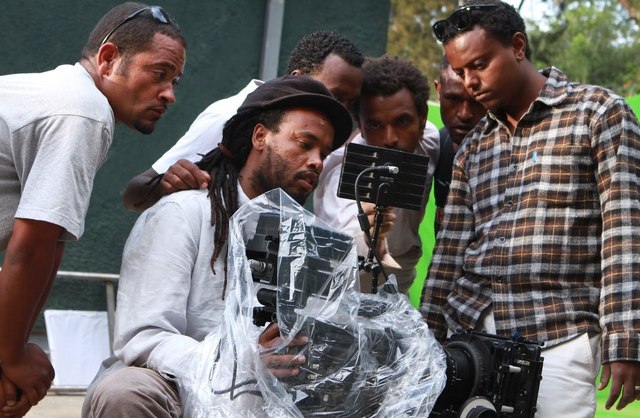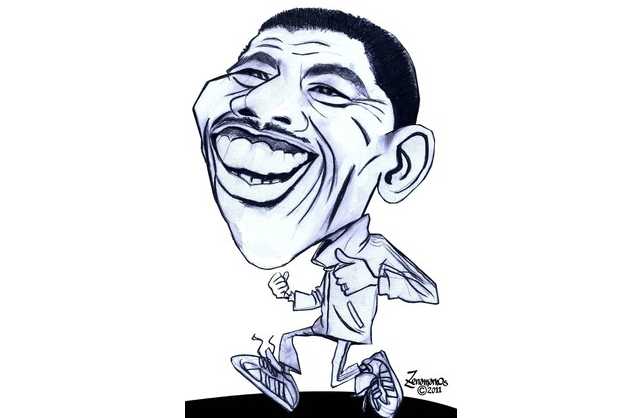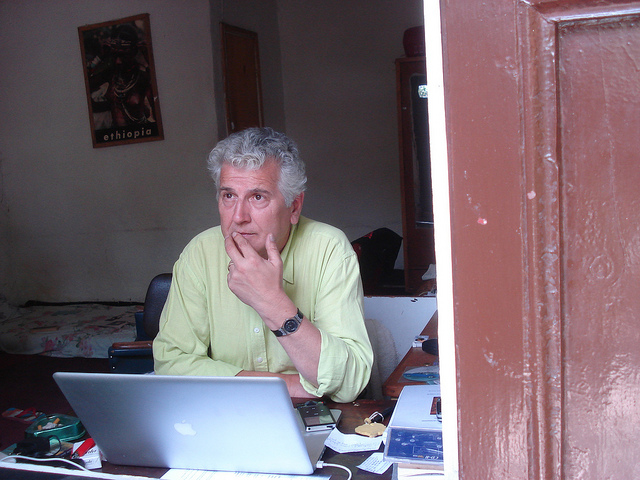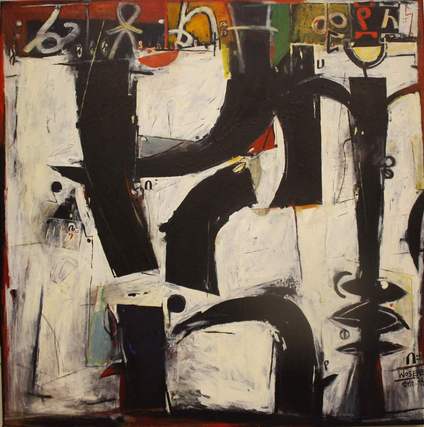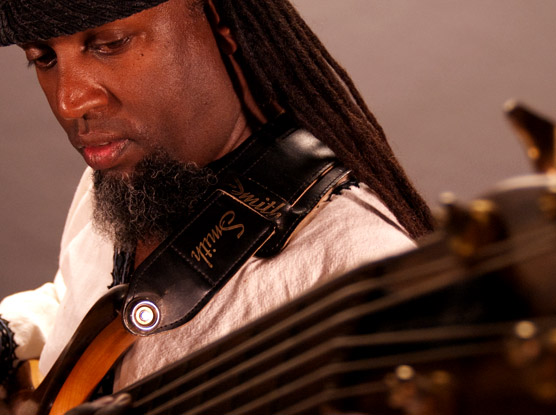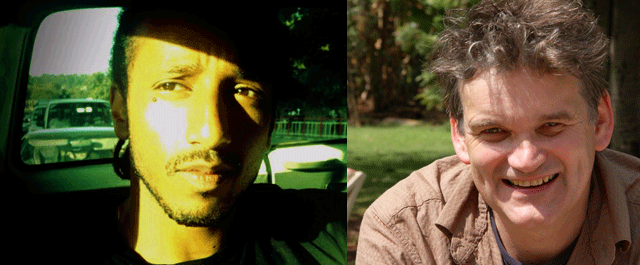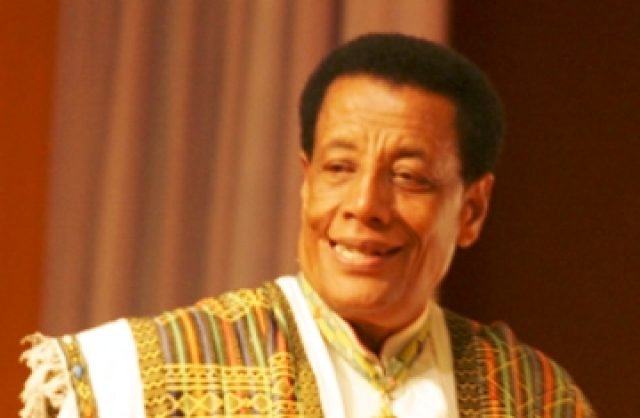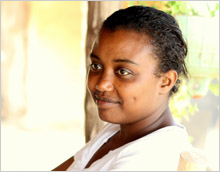Tadias Magazine
By Tadias Staff
Updated: Thursday, September 6, 2012
New York (TADIAS) – In the end, Emperor Haile Selassie died in prison, officially of natural causes but widely rumored to have been killed without trial by a military junta, apparently suffocated to death and buried under a toilet for more than seventeen years. Prior to that, however, the late emperor whose remains has since been moved to its current resting place at Kidist Selassie (Holy Trinity) Cathedral in Addis Ababa, was a long-reigning ruler of Ethiopia for more than four decades. He had been fiercely criticized for his reluctance to share power, and praised as visionary for his single-minded policy of modernization. According to a new book by Theodore M. Vestal, Professor Emeritus of Political Science at Oklahoma State University — who has done an extensive research about the emperor’s foreign visits, particularly to the United states — Haile Selassie was a world-class globe trotter as well, traveling the world on behalf of Ethiopia, forging diplomatic, military and commercial relationships from Africa to North America, and along the way subtly promoting the country’s brand as a mysterious and mystical land, as well as an attractive tourism and investment destination.
Haile Selassie was indeed the first Ethiopian leader that ventured out for extended travels throughout Africa, Europe, the Middle East, and to North and South America. In a recent interview with Tadias Magazine, Professor Vestal said, the emperor’s relentless pursuit of international diplomacy had big impact on how the rest of the world viewed Ethiopians.
“The Emperor was a fast learner, and I think his travels abroad in 1922 and 1924 were important milestones in his education,” Professor Vestal said, referring to his trip abroad as a young man before his coronation. “He took in all the tourist sites, met royal and not-so royal leaders, and assuaged his passion to know more about the latest mechanical wonders of Europe.” He added: “Haile Selassie also discerned how Ethiopia and Africa were viewed by foreigners.”
“His trip was a public relations triumph of the first magnitude, and he made a positive impression on many who had little if any contact with Africans, much less a ruler with an extraordinary entourage,” Professor Vestal continued. “His warm reception and demonstrative press coverage provided an appropriate gloss on the image of Ethiopia as a nation of note that had been earned on the field of battle at Adwa.”
Vestal noted that the Emperor’s travels inspired some of his domestic “agenda of modernization” that he pursued “as best he could” in the face of “conservative” critics at home.
“He beheld how other monarchs ruled and tried to follow their best practices in his own reign and for his own purposes,” Vestal noted.
Below is the rest of our interview with Professor Ted Vestal about his most recent book: The Lion of Judah in the New World, which explores Emperor Haile Selassie’s travels to the United States and shaping of Americans’ attitude towards Africa.

Dr. Ted Vestal (Courtesy photo)
TADIAS: In the chapter entitled A Lion in the Streets you noted that Emperor Haile Selassie’s first visit to America coincided with the U.S. Supreme Court’s ruling on Brown v. Board of Education. Given the Emperor’s travels to racially segregated states at the time please tell us a bit more about this unique moment in history.
Ted Vestal: At the time of the Emperor’s first state visit to the United States in 1954, racial discrimination was still practiced and enforced by law in the southern states of the old Confederacy and in some of the border states. In 1896 (the same year as the Battle of Adwa), a decision by the U.S. Supreme Court had given approval to the “separate but equal” doctrine that became the legal basis of segregation practices and Jim Crow laws under which African-Americans were “second-class citizens” lacking equal opportunities in education and employment. During the post-World War II era, however, the ideas of “humane democracy” of Franklin Roosevelt’s New Deal were having an important effect in bettering the position of the African-American in American life. Growing numbers of African-Americans began to improve their economic status by entering professions, businesses, and higher paying occupations. During the war, the color line was abolished by many employers and labor unions, while the man-power shortage, the government’s hiring of African-Americans for federal positions and requiring “no discrimination” clauses in federal contracts all contributed to this development.
Except for certain areas in the “deep” South, segregation was being brought to an end in public places such as hotels, theaters, restaurants, and recreational facilities. African-Americans all over the country were voting in larger numbers–sometimes requiring the aid of the Supreme Court to accomplish this. The lot of the African-American in transportation, education, and housing was likewise improved by the Court’s decisions. The ideas of the New Deal became a force creating a deep-seated change in American mores, with many people convinced that the maintenance of a caste system was inconsistent with the twentieth century idea of America as a constitutional democracy. Despite these changes, Swedish sociologist Gunnar Myrdal wrote in 1944 that “the status accorded the Negro in America represents nothing more and nothing less than a century-long lag of public morals.”
This changed on 17 May 1954, when the Supreme Court rendered perhaps the most fateful judicial decision of the twentieth century—Brown v. Board of Education. For the first time, the Court met head-on the moral challenge of the separate but equal doctrine in public schools and in a unanimous decision declared that doctrine unconstitutional. Chief Justice Earl Warren wrote the opinion of the Court declaring that separate facilities were inherently unequal and violated the Equal Protection clause of the Constitution. In the years that followed, segregation on the basis of race slowly came to an end, and African-Americans were more fully integrated into American life. At the time of Haile Selassie’s 1954 visits to Oklahoma and Louisiana, however, segregation was still in full sway in those states, and the Emperor’s acclaim broke down the color bar and tossed the moral question of racial biases squarely into the forum of American public opinion. Hence, the Emperor’s state visit played a role in hastening integration in the United States.
TADIAS: You cited Henry Morton Stanley as “probably one of the first Americans to visit Ethiopia” in the 1800s. Please tell us a bit more about him and his work as a correspondent for the New York Herald.
Ted Vestal: Stanley was an intriguing character who was an adventurer and explorer and who might have been responsible for the spread of sleeping sickness in Central Africa. A Welsh immigrant, he came to the United States at the age of eighteen in 1859. He had the distinction of serving in both the Confederate and Union armies and the Union navy during the Civil War. Stanley subsequently became a journalist and covered international events for U.S. newspapers, going to, among others, such “exotic” locales as the Ottoman Empire in 1860, the American frontier West in 1867 (where he reported on the work of the Indian Peace Commission), Abyssinia and the Napier expedition of 1868, present day Tanzania where in 1871 he searched for and “found” the “lost” Scottish missionary and explorer David Livingstone, the Congo River whose source he found in 1874, and Equatoria in the southern Sudan where he led the Emin Pasha Relief Expedition in 1886. The New York Herald and Britain’s Daily Telegraph were Stanley’s most important newspaper employers, and Belgium’s King Leopold II was his patron in some of his expeditions of discovery in Africa. Stanley wrote about his adventures and explorations in a series of books, the most popular of which were Through the Dark Continent (1878) and In Darkest Africa (1890). In the 1890s he returned to Britain where he was knighted and served in Parliament from 1895-1900. He died in London in 1904.
TADIAS: Your book states that it was during the era of Emperor Menelik that formal diplomatic ties were forged between Ethiopia and the United States. Robert Skinner was the American diplomat sent to Ethiopia with the task of negotiating the first commercial treaty between the two nations. What were some of the main negotiation points of this first treaty?
Ted Vestal: In 1903, Skinner made it clear that commercial interests were the sole basis for contact between the two nations. Emperor Menelik appreciated the fact that the United States had no colonial or political ambitions in Africa and might serve as buffer against imperialist European powers in the region. The United States sought to expand trade with Ethiopia, the only non-colonized country in the region, in ways that were not available in the colonized nations of Africa. Skinner hoped to promote U.S. exports, which he thought would have “the power to transform Ethiopia.” His attitude has been called “free-trade imperialism” or “informal empire” by historians. Ethiopia, having successfully defended its independence at the Battle of Adwa, was a prime target for the American mission. The country did not need the blessings of European colonialism for it to move into a new stage of social and economic development. The Americans wanted Ethiopians to develop their acquisitive faculties to give them a taste for more wants and hence more consumerism. Peasants would have to be the driving force in such a change because the manufacturing sector was in its infancy. The purchasing power of the Ethiopians was small, but if their desire for foreign manufactured goods could be increased, they might respond by harvesting larger crops and raising more livestock to increase their dollar holdings. The increased trade that Skinner dreamed of would require a social and economic revolution in which largely self-sufficient farmers would be more driven by the profit motive. Although the Skinner treaty was ratified by the U.S. Senate in 1910 and was valid for ten years, trade between the two countries was limited until after World War II. Emperor Menelik was still more interested in the purchase of arms during the remaining years of his reign.
For the most recent writing on the subject, see Amanda Kay McVety, “Enlightened Aid: U.S. Development as Foreign Policy in Ethiopia,” Foreign Affairs, Sept/Oct 2012.
TADIAS: Haile Selassie’s visit to America also jump-started President Truman’s famous “Point Four Program,” which you point out “emphasized the distribution of knowledge rather than money.” Can you elaborate on some of the developments that arose from this program?
Ted Vestal: The purpose of the Point Four Program was to share American “know-how” with developing nations. In Ethiopia, the greatest legacy of Point Four was the establishment of modern agricultural instruction, research, and extension in the country. The Imperial College of Agriculture at Alemaya and the Jimma Agricultural High School were major U.S.-inspired initiatives in Ethiopian education that have endured and grown into significant centers of learning today. The multi-million dollar Point Four Program went through a series of name changes and morphed into the U.S. Agency for International Development (USAID) that, under whatever moniker, was responsible for many programs that benefited Ethiopia, including crop and livestock protection, teacher training, vocational trade schools, health programs, nurse education, malaria eradication, the creation of mapping and national archives, a Blue Nile basin survey, regional development, national airlines training, public administration, and the provision of university faculty and administration. The ties established between Ethiopia and Oklahoma State University under the country’s very first Point Four contract have been maintained to the present day as the longest continual relationship between an American university and a Sub-Saharan African nation. The good will initiated by the Point Four Program doubtlessly influenced the choices of many Ethiopians to pursue further education in the United States and even to immigrate to the New World when government oppressions at home forced them to leave.
TADIAS: Haile Selassie’s tour of America also included going to visit the Boeing Aircraft Plant. Ethiopian Airlines remains one of Boeing’s loyal customers to date and recently became the only African airline to acquire the Dreamliner. What can you tell us about the development of this historic relationship?
Ted Vestal: Although Ethiopian Airlines had been established in 1946 as a joint venture with the U.S. airline TWA (Trans World Airlines) with the acquisition of five U.S. Government surplus C-47 aircraft and had developed into the backbone of Ethiopia’s infrastructure, it was not until 1960 that Ethiopian was to purchase Boeing planes (720-Bs) to usher in the jet age. I do not know the story behind the Emperor’s tour of the Boeing factory in Seattle during his 1954 state visit. His advisor, John Spencer, who accompanied Haile Selassie on the trip, had been instrumental in setting up the agreement with TWA and served on the corporation’s board. Perhaps Spencer as well as the Ethiopian/TWA executives in Ethiopia had foreseen Boeing’s becoming a leader in commercial jet air craft and had arranged for the factory visit. It was a prophetic event, for Boeing was to enjoy great success in designing and building both military and commercial jet aircraft in the years following. Indeed, Boeing planes have been in service at Ethiopian Airlines continuously since 1962 when the first two Boeing 720-B aircraft landed at the newly constructed Bole Airport. As U.S. Ambassador Ed Korry explained to me, the Emperor was wily in requesting American aid to purchase state of the art jets for Ethiopian so that the airline could maintain its status as Africa’s finest airline. Having purchased the aircraft, Haile Selassie then had to have funds to build airports large enough for them to land and take off—funds that the United States was willing to provide. That was how Ethiopia’s first four modern airports were constructed. In September, the Ethiopian Airlines-Boeing tie will be part of a poignant reunion when one hundred Returned Peace Corps Volunteers who began teaching in Ethiopia fifty years ago will journey back to the land of their service on a new, top-of-the-line Ethiopian Boeing 787 Dreamliner.
TADIAS: Can you summarize how the historical diplomatic ties between America and Ethiopia has shaped each country?
Ted Vestal: The diplomatic ties between the two nations were not very dynamic until the mid-1930s and the Italo-Ethiopian war. Although Ethiopians had encouraged American businesses to consider trade and investment in Ethiopia ever since the Skinner mission in 1903, other than occasional official visitors, Ethiopia did not develop a diplomatic presence in the United States until 1935, and even then there was no embassy in Washington.
During the Italian-Ethiopian crisis of 1934-1935, the United States took a neutral stance on the grounds of “non-interference in European conflicts” and because the matter had been given to the League of Nations. Shortly after Italian forces occupied Addis Ababa in 1936, the United States, which did not recognize Rome’s annexation of Ethiopia, shut down its legation. U.S. diplomacy during the Italian crisis reflected the American policy goal of staying out of international entanglements and avoiding war.
Following the liberation of Ethiopia and America’s declaration of war on the Axis powers in 1941, the two nations became allies. The United States sent military assistance under a Lend Lease agreement, and Emperor Haile Selassie sought additional American aid to replace British influence in his country. Ethiopia and the United States reestablished diplomatic relations in 1943 with the United States opening a new legation along Entoto Road and Ethiopia sending its first resident minister to Washington. The Emperor sought American support for Ethiopian access to the Red Sea and the return of Eritrea—aspirations which eventually were realized with help from the United States. The U.S. Air Force subsequently flew an Ethiopian delegation to San Francisco to attend the founding conference of the United Nations in 1945. Thus U.S. diplomatic ties paid a role in assisting Ethiopia’s becoming a leading advocate of collective security in the fledgling UN. During the Korean conflict in 1950-1953, Ethiopia sent an armed battalion that fought alongside other United Nations forces. Ethiopia’s Kagnew battalion was transported to Korea on American ships and worked closely with U.S. forces in combat. Ethiopian forces later served with UN troops in the Congo in the 1960s. These contributions were greatly admired in the United States.
In the immediate post-World War II era, Ethiopian-American diplomatic relationships were shaped by the developing Cold War. Containment of the Soviet Union and its allies became America’s primary foreign policy after 1947. The United States and Ethiopia signed a treaty of amity and economic relations in 1951 and a Point Four technical assistance agreement the following year. This was the beginning of a U.S. foreign aid program that was to become the largest in Africa. The United States continues to be a strong financial supporter of Ethiopia today.
In the 1950s U.S. diplomacy focused on acquiring military access and communications facilities in Ethiopia, keeping communist influence out of the country, and maintaining a government that reflected pro-Western positions in international and regional arenas. Ethiopia wanted American assistance in expanding and modernizing its military, help with modernization of the economy, and political support for the incorporation of Eritrea, control over the Ogaden, and U.S. aid should there be any threats to its sovereignty. To the present time, Ethiopia and the U.S. military continue to have close connections.
In 1962, the first group of Peace Corps Volunteers (PCVs), a majority of whom served as secondary school teachers, came to Ethiopia. In the mid-1960s, about half of the secondary school teachers in the country were PCVs. During the next eleven years, more than 2,500 PCVs were to serve in Ethiopia in diverse capacities with various ministries and agencies (in the 1990s, PCVs again were assigned to Ethiopia and operate there today). With the large increase in military assistance, Point Four aid, and the Peace Corps, many Americans worked in Ethiopia in the 1960s and early 1970s. At the same time, more Ethiopians were sent to the U.S. for higher education or military training.
In 1963 following the creation of the Organization of African Unity (OAU) in Addis Ababa, Ethiopia became even more important to U.S. diplomacy. The U.S. hoped Haile Selassie would serve as a moderating influence within the OAU and in contacts with African leaders.
Ethiopian-U.S. diplomatic ties enabled Haile Selassie to modernize and increase the size of his military forces to be one of the largest and best equipped in Africa. From the 1950s until the end of Haile Selassie’s reign, Ethiopia received about 80 percent of all U.S. military aid for Africa and one-fifth of American economic assistance. This financial support probably had extended the longevity of the Emperor’s rule. The Ethiopian-U.S. military agreements, however, resulted in Arab hostility and, as the Cold War escalated, gave the Soviets a base for intervention in Somalia. This eventually led to the Soviets becoming dominant in Ethiopia during the Derg era and to the U.S. switching its support to Somalia in the 1970s and 1980s.
Through diplomacy, the United States maintained a military listening post in an area strategic to protecting shipping lanes from Arab oil-exporting countries. In a way, diplomatic ties with Ethiopia were a learning experience for the United States during the years that led to the end of colonialism throughout the continent and the 1960s, “the decade of Africa.” Over a long period, Ethiopia was a stable, moderate friend of America that by trial and error supported its best ally in Africa. Ethiopia benefitted in many ways from the military and economic development funds that were the equivalent of rent for Kagnew Station. The greatest legacy of the diplomatic ties of the two countries, however, has been the friendship between the people of Ethiopia and the United States which has persisted regardless of what paths were taken by the governments of the two nations.
TADIAS: And last but not least, please tell us about your personal and academic interest in Ethiopia and how it began?

Professor Ted Vestal
Ted Vestal: Like many Americans who were in colleges and universities during the 1950s, I knew little about Africa, much less about Ethiopia during my student days. There were few opportunities, even in major graduate programs such as Stanford’s, to study “the developing world.” African nations were a part of political science courses on colonial systems or “British Empire studies.” Emperor Haile Selassie was well known to my generation because of his memorable speech before the League of Nations in 1936 that was included in Allied propaganda films and shorts during World War II. His speech, in its entirety, also was published in many international relations or international organization texts. Other than newsreels of the Italo-Ethiopian War and liberation, there was sparse information about Ethiopia. By the time I was in college, I had heard of Oklahoma State University’s work in agriculture in Ethiopia, work that enjoyed an excellent reputation. I also knew of the Emperor’s visit to Oklahoma in 1954. A few years later, in 1960, I had become intrigued with President Kennedy’s idea of a Peace Corps. By that time, I had a wife and two children and didn’t think there was any way I could be a part of the new organization that JFK started shortly after his inauguration. Then I heard of something called the Peace Corps staff that worked with PCVs overseas, and I applied immediately. Through the good offices of my friend and college classmate, Bill Moyers, I was invited to go to Washington and eventually was interviewed by Peace Corps Director Sargent Shriver. He offered me a staff position in Ethiopia, and I began to seriously study that nation while working in Peace Corps/Washington. In DC, My wife and I were most fortunate to study Amharic with one of Ethiopia’s greatest linguists, Tadesse Beyene, who was a graduate student at Georgetown University at the time. He taught us much in a short time—and much more about Ethiopia than just the spoken language. When the Emperor came on his second state visit to the U.S. in 1963, I was on Pennsylvania Avenue cheering as he and Kennedy drove by in an open convertible. A short time later, I observed Haile Selassie marching in the procession of world leaders at Kennedy’s funeral.
When we arrived in Addis Ababa in 1964, my education went into high gear. Living and working in Ethiopia for over two years was the best learning experience one could have about the country and its people. I was privileged to visit all the nation’s provinces and to meet Ethiopians from all walks of life. The more I learned, the more I wanted to know—a situation that has continued throughout my life.
After my Peace Corps service, I maintained an interest in Ethiopia but did not want to return there during the time of the repressive dictatorship of Mengistu Haile Mariam and the Derg. During the horrendous famine in Ethiopia in 1984, I suffered from what Conner Cruise O’Brien called “the shock of non-recognition” when reading about conditions there, and I decided to write my version of what was happening. I wrote an article, “Ethiopia’s Famine: A Crises of Many Dimensions,” that was immediately published by the Royal Institute for International Relations in London in its journal The World Today. Thereafter, I was in demand to write and speak about Ethiopia and its problems. After the Derg fell in 1991, I was a consultant to the Transitional Government of Ethiopia and served as an international election observer in the 1992 national elections. I became involved in the process of writing a new constitution for the country and was asked to testify before the Committee on Foreign Affairs, U.S. House of Representatives, on “Ethiopia: The Challenges Ahead.” I was active in International Conferences of Ethiopian Studies, and I was able to get back to Ethiopia every few years to interview a host of Ethiopians. Starting in 1995, I wrote expert witness affidavits or testified in some 120 political asylum cases of Ethiopians and Eritreans seeking to escape tyranny and human rights abuses. This experience was a significant part of my education and informed my writing on Ethiopia: A Post-Cold War African State published by Praeger in 1999 and other works. Now as an emeritus professor, I continue to think about and to write about Ethiopia and its fascinating people and to enjoy the friendship of some of their best and brightest folk.
—-
Click here to learn more and get a copy of Professor Ted Vestal’s book.
Cover photo: At President Kennedy’s burial service at Arlington National Cemetery on November 25, 1963. Among the world leaders pictured with Haile Selassie include General Charles de Gaulle of France; Ludwig Erhard of Germany; Queen Frederica of Greece; King Baudoin of Belgium; and other mourners. (Photo credit: Cecil Stoughton, White House/John F. Kennedy Presidential Library and Museum, Boston).
Related:
Rarely Seen White House Photos Featuring Emperor Haile Selassie
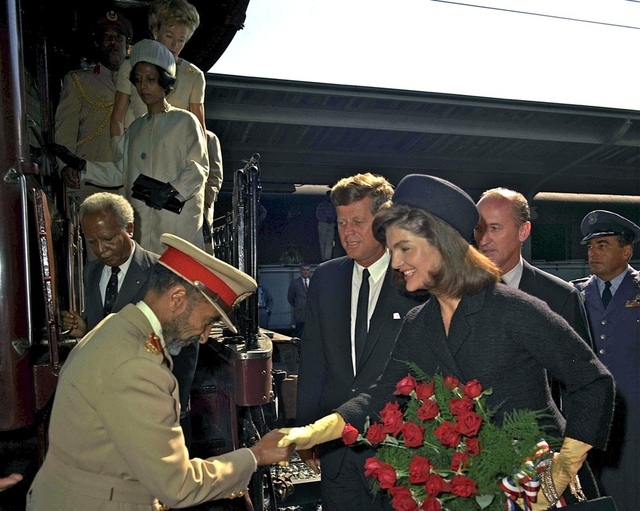
Emperor Haile Selassie is greeted by President John F. Kennedy and First Lady Jacqueline Kennedy upon his arrival at Union Station in Washington, D.C on October 1st, 1963. (Kennedy Library and Museum)
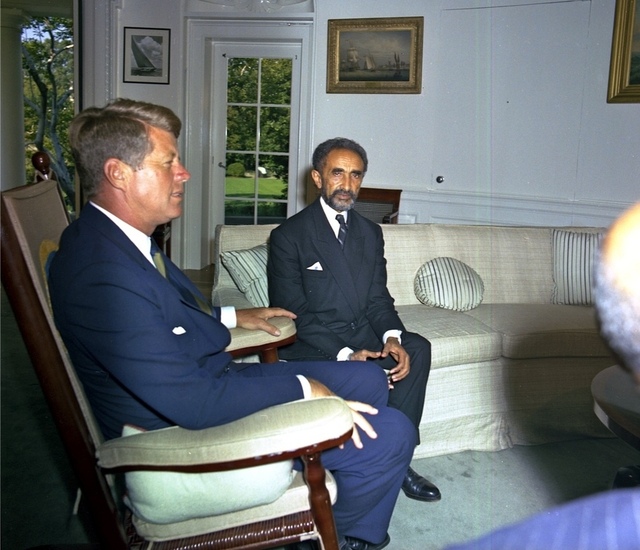
President John F. Kennedy and Emperor Haile Selassie meeting at the White House, October 1963.
Join the conversation on Twitter and Facebook.
